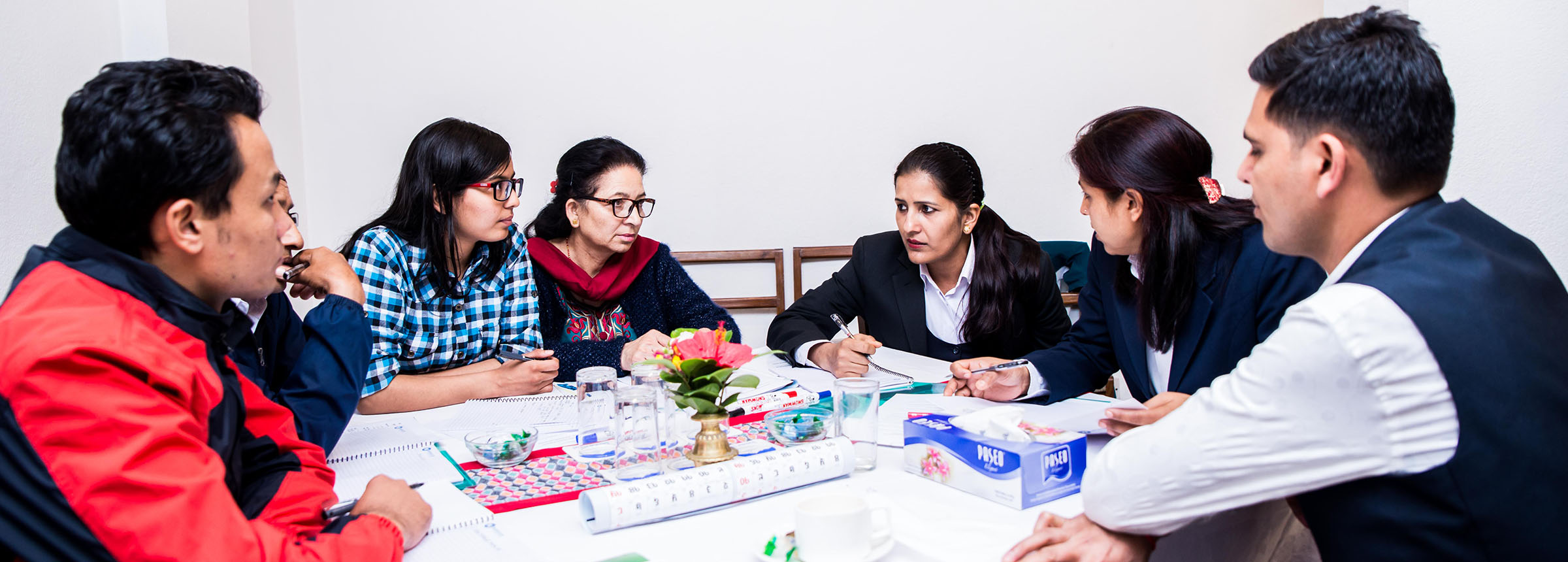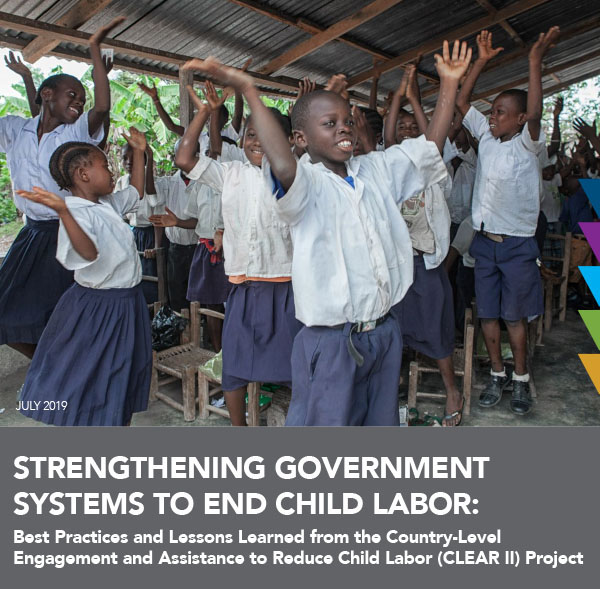
Thematic Areas : CLEAR II GLP
Legislative Reform
CLEAR II partner, Lawyers Without Borders (LWOB), takes a collaborative capacity building approach when providing technical assistance to partner governments with legislative reform. CLEAR II works with in-country committees to build their capacity to consult stakeholders and draft legislative language and recommendations, providing training on key topics and skills such as legislative analysis and drafting and international best practices.
Before beginning work in-country, LWOB and pro bono law firm partners conduct a comprehensive legislative assessment that determines the current state of implementation of relevant international conventions. This assessment serves as a jumping off point for discussions with stakeholders in-country to determine if any legislative or regulatory reform is desired, and if so, what these changes might look like. The project works with stakeholders to create coordination plans to help different groups work together to implement legislation and streamline processes. To date, the project has enabled committees in all six project countries to draft legislation such as the hazardous and light work lists as well as child labor acts.

To read more about CLEAR II experience with LRC click below:
Belize
Liberia
To see related products developed in CLEAR II countries, click below:
Belize Child Labor Manual and Rapid Reference Cards
Jamaica Manual and Rapid Reference Cards
Liberia Child Labor Manual and Rapid Reference Cards
Nepal Rapid Reference Cards (English & Nepali)
Labor Inspectorate Strengthening
CLEAR II partner Verité works to enhance government capacity by providing technical assistance for strengthened labor inspectorate and enforcement systems. The CLEAR II Labor Specialist provides strategic leadership on technical components of the project’s activities that are related to labor inspection and government capacity building.
During this process, the specialist – in collaboration with country stakeholders – assesses the existing labor inspectorate infrastructure. Based on the results of the assessment, the labor specialist authors materials related to labor inspection issues and designs trainings on child labor. To reach a broader audience, the project applies a Trainings of Trainers approach for labor inspectorate, sharing the curriculum and any tools developed which could help trainers further implement the training with other labor inspectors. The curriculum also links labor law enforcement to justice mechanisms.
To read more about the Labor Inspectorate experience in Nepal, click here.
To see related products developed in CLEAR II countries, click below:
Liberia Organizational toolkit
Liberia Curriculum
Nepal Organizational Toolkit
Nepal Curriculum (English & Nepali)
Belize Curriculum
Burkina Faso Curriculum (English & French)
Panama Curriculum
Child Labor Monitoring System (CLMS)
Worst Forms of Child Labor (WFCL) enforcement requires multiple, synchronous approaches. This is because, in informal sectors such as family and smallholder agriculture, domestic service, and unregulated mining, WFCL is harder to monitor and often rendered invisible. Additionally, because many countries have a shortage of labor inspectors, informal WFCL monitoring is not prioritized the way WFCL monitoring is in the formal sector. Winrock has found that community-based monitoring by neighbors, teachers, volunteers, and child protection agents is a successful strategy to identify and address WFCL, especially in informal work settings. Thus, drawing on CLMS models Winrock has used elsewhere, CLEAR II is working to strengthen or establish CLMS in Nepal, Liberia, and Burkina Faso. This supplements the project’s ongoing activities with labor inspectorates, ensuring that WFCL is being addressed in both formal and informal sectors.

Leading up to creating a functioning CLMS, the project assesses existing CL and child protection monitoring systems. Based on this assessment, the team works with in-country stakeholders to analyze how to build on existing systems or combine and revise systems for efficiency and effectiveness. Through multi-day workshops, the project team facilitates discussion with government partners, to coordinate the scale up and operationalization of CLMS. CLEAR II is also committed to sustainable interventions and is exploring low cost solutions, such as open source mobile data collection, to ensure that local governments can continue to maintain CLMS when the project is complete.
For more information on CLMS, click here.
National Action Plan
As an intermediate objective of the project, CLEAR II facilitates increased implementation of regional and national action plans on child labor. CLEAR II provides technical assistance to host country governments in drafting their action plans, this is done by organizing stakeholder meetings and workshops at the local and regional level. In addition to this, the project provides assistance to stakeholders as they seek endorsement of the action plan by relevant ministries and agencies.
The project also works with governments to operationalize these action plans through local-level dissemination and the development of implementation plans. It supports the establishment or strengthening of steering committees that are tasked with action plan enforcement and implementation. CLEAR II is working with host country governments to develop and roll out regional and national actions plans in Burkina Faso, Nepal, Jamaica, and Liberia.
STRENGTHENING GOVERNMENT SYSTEMS TO END CHILD LABOR:
Best Practices and Lessons Learned from the Country-Level Engagement and Assistance to Reduce Child Labor (CLEAR II) Project

This manual describes best practices and lessons learned from the CLEAR II project. The CLEAR II project team commissioned case studies to identify best practices and lessons learned in government engagement and across four key project interventions: labor inspectorate strengthening, legislative reform, National Action Plan implementation, and private-sector engagement. The five-chapter manual represents the culmination of the project’s research and analysis hoping it serves as a tool for project implementers working with government partners to eliminate child labor through government strengthening. Throughout the report a key approach will be seen: the use of participatory workshops. Participatory workshops that convene different stakeholders were a keystone approach for CLEAR II throughout all project components and this approach can be replicated in other contexts. Practitioners used to think of training in narrow terms: a trainer imparts knowledge and skills to participants. Participatory workshops, however, achieve much more than that. CLEAR II found that workshops can:
- Increase awareness and change attitudes about child labor
- Strengthen and transform relationships between groups (prosecutors and labor inspectors, labor inspectors and private sector, government inspectors and NGO inspectors)
- Forge connections for ongoing information sharing, coordination, collaboration across different levels of government, among stakeholders, and within regions
- Reposition government and the private sector as allies with a shared goal
- Reposition labor inspectors as resources, experts, and advisors
- Accomplish shared work (legislative recommendations, regional action plans, coordination agreements)
All five chapters of the manual include information about CLEAR II’s use of workshops as tools for training, relationship-building, and coordination.
Funding is provided by the United States Department of Labor under cooperative agreement number IL‐26260-14-75-K. Ninety-six percent of total costs of the project are financed with Federal funds, for a total of 7,595,000 dollars. This material does not necessarily reflect the views or policies of the United States Department of Labor, nor does the mention of trade names, commercial products, or organizations imply endorsement by the United States Government.
